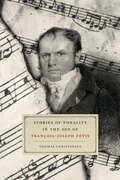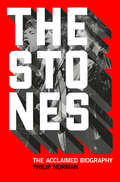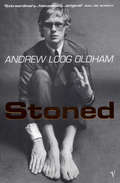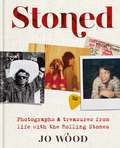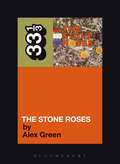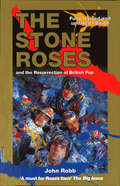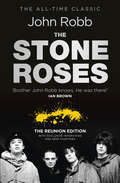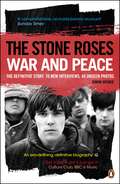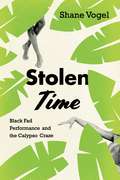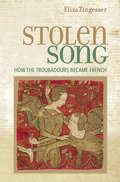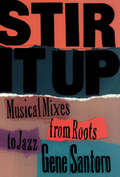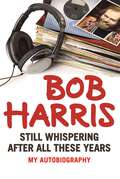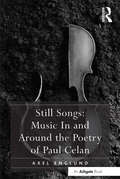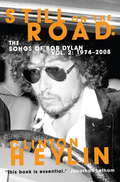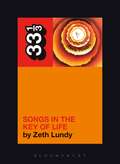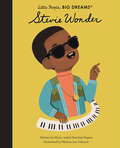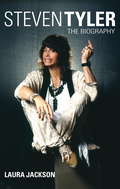- Table View
- List View
Stories of Tonality in the Age of François-Joseph Fétis
by Thomas ChristensenStories of Tonality in the Age of François-Joseph Fétis explores the concept of musical tonality through the writings of the Belgian musicologist François-Joseph Fétis (1784–1867), who was singularly responsible for theorizing and popularizing the term in the nineteenth century. Thomas Christensen weaves a rich story in which tonality emerges as a theoretical construct born of anxiety and alterity for Europeans during this time as they learned more about “other” musics and alternative tonal systems. Tonality became a central vortex in which French musicians thought—and argued—about a variety of musical repertoires, be they contemporary European musics of the stage, concert hall, or church, folk songs from the provinces, microtonal scale systems of Arabic and Indian music, or the medieval and Renaissance music whose notational traces were just beginning to be deciphered by scholars. Fétis’s influential writings offer insight into how tonality ingrained itself within nineteenth-century music discourse, and why it has continued to resonate with uncanny prescience throughout the musical upheavals of the twentieth and twenty-first centuries.
The Stones: The Acclaimed Biography
by Philip NormanIn 2012 the Rolling Stones celebrate their 50th anniversary. Their story – the band's meteoric rise to fame, the Marianne Faithfull, Brian Jones and Altamont scandals, the groundbreaking hits – is the stuff of twentieth century legend, and core to popular culture.
Stoned: A Memoir Of London In The 1960s
by Andrew Loog Oldham'People say I made the Stones. I didn't. They were there already. They only wanted exploiting. They were all bad boys when I found them. I just brought out the worst in them.' Andrew Loog Oldham was nineteen years old when he discovered and became the manager and producer of an unknown band called The Rolling Stones. His radical vision transformed them from a starving south London blues combo to the Greatest Rock 'n' Roll Band That Ever Drew Breath, while the revolutionary strategies he used to get them there provoked both adulation and revulsion throughout British society and beyond. An ultra-hip mod, flash, brash and schooled in style by Mary Quant, he was a hustler of genius, addicted to scandal, notoriety and innovation.
Stoned: Photographs and treasures from life with the Rolling Stones
by Jo Wood"These images are great and have been tucked away for years"RONNIE WOOD Take a look inside rock 'n' roll history with over 500 never-before-seen photographs, notes, artworks, diary entries and mementoes from life behind the scenes of the Rolling Stones.Married to legendary Stones guitarist Ronnie Wood for 30 years, Jo Wood lived the rock star life. Her incredible collection of treasures from that time is a once-in-a-lifetime look inside the biggest band in the world.Accompanied by personal memories and behind the scenes anecdotes from Jo, Stoned is a love letter to the rock 'n' roll life and a truly unique window into the eye of the Rolling Stones hurricane.
The Stone Roses' The Stone Roses (33 1/3)
by Alex GreenThe Stone Roses shows a band sizzling with skill, consumed with drive and aspiration and possessing an almost preternatural mastery of the pop paradigm. This book explores the political and cultural zeitgeist of England in 1989, and attempts to apprehend the magic ingredients that made The Stone Roses such a special album.
The Stone Roses And The Resurrection Of British Pop
by John RobbThe band, the lifestyle, the revolution. This classic biography charts the phenomenal rise of The Stone Roses to the icons they are today, using interviews, rehearsal tapes and the archives of author John Robb who was with them from the beginning.Robb's exclusive inside knowledge of The Stone Roses creates a compelling and intimate insight into how the band single-handedly set the blueprint for the resurgence of UK rock 'n' roll in the 1990s: Ian Brown's new lazy-style vocals, Reni's fluid, funk-tinged, ground-breaking drumming, and the guitar genius of John Squire. From the band members' early years to the inception of the Roses, through the tours and success, their influences and style, to the demise of the original line-up and their solo careers; every high and low is documented in minute detail.This is the definitive, most revered account of one of the most influential British bands in pop music history.
The Stone Roses And The Resurrection of British Pop: The Reunion Edition
by John Robb'The Stone Roses have become folk heroes, frozen in time. And their story, with roots in punk through post-punk, scooter boys, skinheads, Northern Soul, psychedelia, acid house and Madchester, is everything that is great about British street culture.'Reni. Mani. Ian Brown. John Squire.Names that will forever be remembered for creating their defining album The Stone Roses and a unique but inimitable baggy style.Their phenomenal story was first documented by the man who was with them every step of the way: John Robb. And now, in this special edition of his acclaimed and intimate biography, Robb brings the ultimate rock 'n' roll tale fully up to date.
The Stone Roses: War and Peace
by Simon SpenceBased on 400 hours of interviews with over seventy of The Stone Roses' closest associates, including six former band members, War and Peace is the first major biography of the band that defined a generation.Originally planned in collaboration with Reni, the reclusive drummer, this book had been a year in the making when the Roses, against all odds, announced their re-formation. It is a remarkable coda to an astonishing story. In 1989 their debut album and the single 'Fools Gold' made them the most exciting British export since the Sex Pistols. With their incendiary aura the Roses became figureheads of the 'Madchester' movementWar and Peace traces the band's genesis, studded with violent gigs and abandoned recordings, and shaped by their infamous manager Gareth Evans. As their jeans grew wider and their songs more anthemic, the Roses' legendary gigs culminated in the era-defining Spike Island show in 1990. From this pinnacle the unravelling was spectacular. With the band refusing to play in America, arrested for vandalizing a record company and dragged through the High Court, the epic recording of their dark second album is the stuff of legend. They disbanded in turmoil in 1996.Since then the Roses myth has grown even bigger. 'I Wanna Be Adored', 'She Bangs the Drums', 'Waterfall', 'This Is the One' and 'I Am the Resurrection' have become national anthems, and their first album is widely recognized as one of the best ever made.But the true story behind their rise and fall - and resurrection - has never been told. Until now. From the Manchester backwaters to the worldwide 2012 tour, War and Peace lays bare the irresistible tale of the last of the great bands.* With 40 unseen photos, including from renowned rock photographer Dennis Morris
Stolen Time: Black Fad Performance and the Calypso Craze
by Shane VogelIn 1956 Harry Belafonte’s Calypso became the first LP to sell more than a million copies. For a few fleeting months, calypso music was the top-selling genre in the US—it even threatened to supplant rock and roll. Stolen Time provides a vivid cultural history of this moment and outlines a new framework—black fad performance—for understanding race, performance, and mass culture in the twentieth century United States. Vogel situates the calypso craze within a cycle of cultural appropriation, including the ragtime craze of 1890s and the Negro vogue of the 1920s, that encapsulates the culture of the Jim Crow era. He follows the fad as it moves defiantly away from any attempt at authenticity and shamelessly embraces calypso kitsch. Although white calypso performers were indeed complicit in a kind of imperialist theft of Trinidadian music and dance, Vogel argues, black calypso craze performers enacted a different, and subtly subversive, kind of theft. They appropriated not Caribbean culture itself, but the US version of it—and in so doing, they mocked American notions of racial authenticity. From musical recordings, nightclub acts, and television broadcasts to Broadway musicals, film, and modern dance, he shows how performers seized the ephemeral opportunities of the fad to comment on black cultural history and even question the meaning of race itself.
Stolen Time: Black Fad Performance and the Calypso Craze
by Shane VogelIn 1956 Harry Belafonte’s Calypso became the first LP to sell more than a million copies. For a few fleeting months, calypso music was the top-selling genre in the US—it even threatened to supplant rock and roll. Stolen Time provides a vivid cultural history of this moment and outlines a new framework—black fad performance—for understanding race, performance, and mass culture in the twentieth century United States. Vogel situates the calypso craze within a cycle of cultural appropriation, including the ragtime craze of 1890s and the Negro vogue of the 1920s, that encapsulates the culture of the Jim Crow era. He follows the fad as it moves defiantly away from any attempt at authenticity and shamelessly embraces calypso kitsch. Although white calypso performers were indeed complicit in a kind of imperialist theft of Trinidadian music and dance, Vogel argues, black calypso craze performers enacted a different, and subtly subversive, kind of theft. They appropriated not Caribbean culture itself, but the US version of it—and in so doing, they mocked American notions of racial authenticity. From musical recordings, nightclub acts, and television broadcasts to Broadway musicals, film, and modern dance, he shows how performers seized the ephemeral opportunities of the fad to comment on black cultural history and even question the meaning of race itself.
Stolen Time: Black Fad Performance and the Calypso Craze
by Shane VogelIn 1956 Harry Belafonte’s Calypso became the first LP to sell more than a million copies. For a few fleeting months, calypso music was the top-selling genre in the US—it even threatened to supplant rock and roll. Stolen Time provides a vivid cultural history of this moment and outlines a new framework—black fad performance—for understanding race, performance, and mass culture in the twentieth century United States. Vogel situates the calypso craze within a cycle of cultural appropriation, including the ragtime craze of 1890s and the Negro vogue of the 1920s, that encapsulates the culture of the Jim Crow era. He follows the fad as it moves defiantly away from any attempt at authenticity and shamelessly embraces calypso kitsch. Although white calypso performers were indeed complicit in a kind of imperialist theft of Trinidadian music and dance, Vogel argues, black calypso craze performers enacted a different, and subtly subversive, kind of theft. They appropriated not Caribbean culture itself, but the US version of it—and in so doing, they mocked American notions of racial authenticity. From musical recordings, nightclub acts, and television broadcasts to Broadway musicals, film, and modern dance, he shows how performers seized the ephemeral opportunities of the fad to comment on black cultural history and even question the meaning of race itself.
Stolen Time: Black Fad Performance and the Calypso Craze
by Shane VogelIn 1956 Harry Belafonte’s Calypso became the first LP to sell more than a million copies. For a few fleeting months, calypso music was the top-selling genre in the US—it even threatened to supplant rock and roll. Stolen Time provides a vivid cultural history of this moment and outlines a new framework—black fad performance—for understanding race, performance, and mass culture in the twentieth century United States. Vogel situates the calypso craze within a cycle of cultural appropriation, including the ragtime craze of 1890s and the Negro vogue of the 1920s, that encapsulates the culture of the Jim Crow era. He follows the fad as it moves defiantly away from any attempt at authenticity and shamelessly embraces calypso kitsch. Although white calypso performers were indeed complicit in a kind of imperialist theft of Trinidadian music and dance, Vogel argues, black calypso craze performers enacted a different, and subtly subversive, kind of theft. They appropriated not Caribbean culture itself, but the US version of it—and in so doing, they mocked American notions of racial authenticity. From musical recordings, nightclub acts, and television broadcasts to Broadway musicals, film, and modern dance, he shows how performers seized the ephemeral opportunities of the fad to comment on black cultural history and even question the meaning of race itself.
Stolen Time: Black Fad Performance and the Calypso Craze
by Shane VogelIn 1956 Harry Belafonte’s Calypso became the first LP to sell more than a million copies. For a few fleeting months, calypso music was the top-selling genre in the US—it even threatened to supplant rock and roll. Stolen Time provides a vivid cultural history of this moment and outlines a new framework—black fad performance—for understanding race, performance, and mass culture in the twentieth century United States. Vogel situates the calypso craze within a cycle of cultural appropriation, including the ragtime craze of 1890s and the Negro vogue of the 1920s, that encapsulates the culture of the Jim Crow era. He follows the fad as it moves defiantly away from any attempt at authenticity and shamelessly embraces calypso kitsch. Although white calypso performers were indeed complicit in a kind of imperialist theft of Trinidadian music and dance, Vogel argues, black calypso craze performers enacted a different, and subtly subversive, kind of theft. They appropriated not Caribbean culture itself, but the US version of it—and in so doing, they mocked American notions of racial authenticity. From musical recordings, nightclub acts, and television broadcasts to Broadway musicals, film, and modern dance, he shows how performers seized the ephemeral opportunities of the fad to comment on black cultural history and even question the meaning of race itself.
Stolen Time: Black Fad Performance and the Calypso Craze
by Shane VogelIn 1956 Harry Belafonte’s Calypso became the first LP to sell more than a million copies. For a few fleeting months, calypso music was the top-selling genre in the US—it even threatened to supplant rock and roll. Stolen Time provides a vivid cultural history of this moment and outlines a new framework—black fad performance—for understanding race, performance, and mass culture in the twentieth century United States. Vogel situates the calypso craze within a cycle of cultural appropriation, including the ragtime craze of 1890s and the Negro vogue of the 1920s, that encapsulates the culture of the Jim Crow era. He follows the fad as it moves defiantly away from any attempt at authenticity and shamelessly embraces calypso kitsch. Although white calypso performers were indeed complicit in a kind of imperialist theft of Trinidadian music and dance, Vogel argues, black calypso craze performers enacted a different, and subtly subversive, kind of theft. They appropriated not Caribbean culture itself, but the US version of it—and in so doing, they mocked American notions of racial authenticity. From musical recordings, nightclub acts, and television broadcasts to Broadway musicals, film, and modern dance, he shows how performers seized the ephemeral opportunities of the fad to comment on black cultural history and even question the meaning of race itself.
Stolen Song: How the Troubadours Became French
by Eliza ZingesserStolen Song documents the act of cultural appropriation that created a founding moment for French literary history: the rescripting and domestication of troubadour song, a prestige corpus in the European sphere, as French. This book also documents the simultaneous creation of an alternative point of origin for French literary history—a body of faux-archaic Occitanizing songs.Most scholars would find the claim that troubadour poetry is the origin of French literature uncomplicated and uncontroversial. However, Stolen Song shows that the "Frenchness" of this tradition was invented, constructed, and confected by francophone medieval poets and compilers keen to devise their own literary history.Stolen Song makes a major contribution to medieval studies both by exposing this act of cultural appropriation as the origin of the French canon and by elaborating a new approach to questions of political and cultural identity. Eliza Zingesser shows that these questions, usually addressed on the level of narrative and theme, can also be fruitfully approached through formal, linguistic, and manuscript-oriented tools.
Stir It Up: Musical Mixes from Roots to Jazz
by Gene SantoroIt's a cliché that the world is shrinking. As Gene Santoro sees it in his second collection of essays, music is one arena where that cliché takes on a real, but paradoxical, life: while music crisscrosses the globe with ever greater speed, musicians seize what's useful, and expand their idioms more rapidly. More and more since the 1960s, musicians, both in America and abroad, have shown an uncanny but consistent ability to draw inspiration from quite unexpected sources. We think of Paul Simon in Graceland, blending Afropop rhythms and Everly Brothers harmonies into a remarkable new sound that captured imaginations worldwide. Or Jimi Hendrix, trying to wring from guitar the howling, Doppler-shifting winds he experienced as a paratrooper. Or Thelonius Monk, mingling Harlem stride piano, bebop, the impressionist harmonies of DeBussey, and a delight in "harmonic space" that eerily paralleled modern physics. From the startling experiments of such jazz giants as Charles Mingus, to the political bite of Bob Marley and Bruce Springsteen, we see musicians again and again taking musical tradition and making it new. The result is a profusion of new forms, media that are constantly being reinvented--in short, an art form capable of seemingly endless, and endlessly fascinating, permutations. Gene Santoro's Stir It Up is an ideal guide to this ever changing soundscape. Santoro is the rare music critic equally at home writing about jazz (John Coltrane, Ornette Coleman, Tom Harrell), rock (Sting, Elvis Costello, P.J. Harvey), and the international scene (Jamaican, Brazilian, and African pop music). In Stir It Up, readers will find thoughtful but unpretentious discussions of such different musicians as David Byrne and Aretha Franklin, Gilberto Gil and Manu Dibango, Abbey Lincoln and Joe Lovano. And Santoro shows us not only the distinctive features of the diverse people who create so many dazzling sounds, but also the subtle and often surprising connections between them. With effortless authority and a rich sense of music history, he reveals, for instance, how Ornette Coleman was influenced by a mystical group in Morocco--the Major Musicians of Joujouka--whom he discovered via Rolling Stone Brian Jones; how John Coltrane's unpredictable, extended sax solos influenced The Byrds, The Grateful Dead, and most significantly, Jimi Hendrix; and how Bob Marley's reggae combined Rastafarian chants with American pop, African call-and-response, and Black Nationalist politics into a potent mix that still shapes musicians from America to Africa, Europe to Asia. A former musician himself, Santoro is equally illuminating about both the technical aspects of the music and the personal development of the artists themselves. He offers us telling glimpses into their often turbulent lives: Ornette Coleman being kicked out of his high school band for improvising, Charles Mingus checking himself into Bellevue because he'd heard it was a good place to rest, the teenaged Jimi Hendrix practicing air-guitar with a broom at the foot of his bed, Aretha Franklin's Oedipal struggle with her larger-than-life preacher-father. Throughout the volume, Santoro's love and knowledge shine through, as he maps the rewarding terrain of pop music's varied traditions, its eclectic, cross-cultural borrowings, and its astonishing innovations. What results is a fascinating tour through twentieth-century popular music: lively, thought-provoking, leavened with humor and unexpected twists. Stir It Up is sure to challenge readers even as it entertains them.
Stimmungen weben: Eine unterrichtswissenschaftliche Studie zur Gestaltung von Atmosphären
by Julia JungErziehung findet nie im luftleeren Raum statt. Basierend auf dem Atmosphärenbegriff von Gernot Böhme untersucht Julia Jung in ihrer Arbeit Atmosphären im Unterrichtskontext und nimmt hierbei eine Ästhetisierung des Lehrberufs vor. Der Fokus der Untersuchung liegt auf dem empirischen Erfassen und der Versprachlichung eines zumeist unsichtbaren Phänomens zur Entwicklung eines bewusstseinsbildenden und handlungsbefähigenden Konzepts für Lehrpersonen. Mit ihrer Darstellung lenkt Julia Jung den Blick auf das, was Lehrende tagtäglich tun: Sie gestalten Atmosphären. Die Studie leistet damit einen grundlegenden Beitrag zur Unterrichtsforschung und stellt ein Beispiel des empirischen Erfassens von Atmosphären dar.
Still Whispering After All These Years: My Autobiography
by Bob HarrisThe gripping autobiography of broadcasting legend 'Whispering' Bob Harris.Radio 2 DJ Bob Harris first became a household name in the 1970s as the face of live music TV show The Old Grey Whistle Test, and his infectious enthusiasm and ability to discover new musicians has seen him become a national treasure. Today his velvety voice can still be heard on Radio 2's Bob Harris Sunday and Bob Harris Country. Bob tells his story of over 40 years of broadcasting, from the young, passionate music fan who moved to London determined to make music his life, to being presented with an OBE for his services to music broadcasting. Much like his musical heroes, Bob's personal life also had a somewhat rock 'n' roll vibe: he has been married three times, gone bankrupt, fought cancer, weathered a very public spat with a fellow DJ and has had to revamp his career four times. Bob also reveals all about working with the big names of rock, including the Rolling Stones, Elton John, Led Zeppelin and David Bowie.Featuring a 16-page full-colour plate section and foreword by Robert Plant, this is a frank, vibrant and inspiring tale of one of the most influential names on the radio and reveals the story of the man behind the voice.
Still Songs: Music In and Around the Poetry of Paul Celan
by Axel EnglundWhat does it mean for poetry and music to turn to each other, in the shadow of the Holocaust, as a means of aesthetic self-reflection? How can their mutual mirroring, of such paramount importance to German Romanticism, be reconfigured to retain its validity after the Second World War? These are the core questions of Axel Englund's book, which is the first to address the topic of Paul Celan and music. Celan, a Jewish Holocaust survivor who has long been recognized as one of the most important poets of the German language, persistently evoked music and song in his oeuvre, from the juvenilia to the posthumous collections. Conversely, few post-war writers have inspired as large a body of contemporary music, including works by Harrison Birtwistle, György Kurtág, Wolfgang Rihm, Peter Ruzicka and many others. Through rich close readings of poems and musical compositions, Englund's book engages the artistic media in a critical dialogue about the conditions of their existence. In so doing, it reveals their intersection as a site of profound conflict, where the very possibility of musical and poetic meaning is at stake, and confrontations of aesthetic transcendentality and historical remembrance are played out in the wake of twentieth-century trauma.
Still Songs: Music In and Around the Poetry of Paul Celan
by Axel EnglundWhat does it mean for poetry and music to turn to each other, in the shadow of the Holocaust, as a means of aesthetic self-reflection? How can their mutual mirroring, of such paramount importance to German Romanticism, be reconfigured to retain its validity after the Second World War? These are the core questions of Axel Englund's book, which is the first to address the topic of Paul Celan and music. Celan, a Jewish Holocaust survivor who has long been recognized as one of the most important poets of the German language, persistently evoked music and song in his oeuvre, from the juvenilia to the posthumous collections. Conversely, few post-war writers have inspired as large a body of contemporary music, including works by Harrison Birtwistle, György Kurtág, Wolfgang Rihm, Peter Ruzicka and many others. Through rich close readings of poems and musical compositions, Englund's book engages the artistic media in a critical dialogue about the conditions of their existence. In so doing, it reveals their intersection as a site of profound conflict, where the very possibility of musical and poetic meaning is at stake, and confrontations of aesthetic transcendentality and historical remembrance are played out in the wake of twentieth-century trauma.
Still on the Road: The Songs of Bob Dylan Vol. 2 1974-2008
by Clinton HeylinThis is the second volume in Clinton Heylin's magisterial survey of the songs of Bob Dylan. The first volume - Revolution in the Air which is now available in paperback - charted the rise of Bob Dylan from his first jottings to the full expression of genius in songs such as 'Hard Rain Gonna Fall' and 'The Times They Are a Changin''. Still on the Road begins in 1974 with "Blood on the Tracks", the album filled with masterworks such as 'Tangled Up in Blue' and 'Simple Twist of Fate' that heralded a watershed in Dylan's creative journey, and continues to chart his never-ending fascination with music and the art of song up to 2006's "Modern Times". Praise for Revolution in the Air:'Beg, steal, borrow ... a compelling history of Dylan's mercurial song writing.' Mojo, 5-star review'Better than any biography could ever be, and a crucial Dylan book' Jonathan Letham'Valuable resource' Observer'A gripping new book by Dylan scholar Clinton Heylin so is so far in the deep end that its borderline insane . . [yet] has been devoured with a ravenous, insatiable appetite, and I have even made notes in the margin.' Mark Ellen, Word.'Terrifically interesting for Dylan nuts' Sunday Herald'Manna for completists' Metro 'True to form, Heylin digs deep-way deep-into the songs, mixing cold hard facts with illuminating anecdotes.' - Mark Smith, managing editor, Acoustic Guitar
Stevie Wonder's Songs in the Key of Life (33 1/3)
by Zeth LundyLike all double albums, Songs in the Key of Life is imperfect but audacious. If its titular concern - life - doesn't exactly allow for rigid focus, it's still a fiercely inspired collection of songs and one of the definitive soul records of the 1970s. Stevie Wonder was unable to control the springs of his creativity during that decade. Upon turning 21 in 1971, he freed himself from the Motown contract he'd been saddled with as a child performer, renegotiated the terms, and unleashed hundreds of songs to tape. Over the next five years, Wonder would amass countless recordings and release his five greatest albums - as prolific a golden period as there has ever been in contemporary music. But Songs in the Key of Life is different from the four albums that preceded it; it's an overstuffed, overjoyed, maddeningly ambitious encapsulation of all the progress Stevie Wonder had made in that short space of time.Zeth Lundy's book, in keeping with the album's themes, is structured as a life cycle. It's divided into the following sections: Birth; Innocence/Adolescence; Experience/Adulthood; Death; Rebirth. Within this framework, Zeth Lundy covers Stevie Wonder's excessive work habits and recording methodology, his reliance on synthesizers, the album's place in the gospel-inspired progression of 1970s R'n'B, and many other subjects.
Stevie Wonder (little People, Big Dreams)
by Maria Isabel Sanchez Vegara Melissa Lee JohnsonIn this book from the critically acclaimed, multimillion-copy bestselling Little People, BIG DREAMS series, discover the life of Stevie Wonder, the genius behind some of the world’s best-loved songs. At just 8 years old, it was clear that Steveland Judkins was going to be a star. Renamed Stevie Wonder for his astonishing talent on the piano and other instruments, he wrote and performed some of the biggest hits of the 1970s. Stevie became known for his inventiveness, his soulful voice and the social commentary in his lyrics. He is a UN Messenger of Peace and remains one of the music world’s most iconic figures. This inspiring book features stylish and quirky illustrations and extra facts at the back, including a biographical timeline with historical photos and a detailed profile of the great musician’s life.
Stevie Wonder (little People, Big Dreams)
by Maria Isabel Sanchez Vegara Melissa Lee JohnsonIn this book from the critically acclaimed, multimillion-copy bestselling Little People, BIG DREAMS series, discover the life of Stevie Wonder, the genius behind some of the world’s best-loved songs. At just 8 years old, it was clear that Steveland Judkins was going to be a star. Renamed Stevie Wonder for his astonishing talent on the piano and other instruments, he wrote and performed some of the biggest hits of the 1970s. Stevie became known for his inventiveness, his soulful voice and the social commentary in his lyrics. He is a UN Messenger of Peace and remains one of the music world’s most iconic figures. This inspiring book features stylish and quirky illustrations and extra facts at the back, including a biographical timeline with historical photos and a detailed profile of the great musician’s life.
Steven Tyler: The Biography
by Laura JacksonSteven Tyler is one of life's natural born survivors. With an exhaustively vibrant personality, this dynamic lead singer has been one of the most distinctive figures in rock music for more than three decades. Raised in a close, loving family, Tyler survived a tough upbringing in the Bronx. His inherent passion for performing and a talent for playing instruments propelled him into rock music as a teenager. He fronted a succession of local bands before meeting the guys with whom he would form Aerosmith in 1970. Laura Jackson reveals the stories behind Tyler's relationships with band members and the many women in his life, his battle with Hepatitis C, and his drug-fuelled meltdown during the late '70s and early '80s when he was snorting pure heroin. She also explores his visits to rehab in the 1980s which saved his life. Tyler has lived a roller coaster life of excess - spending over a million dollars on drugs - but is miraculously still performing. Steven Tyler: the biography tells his incredible story.
